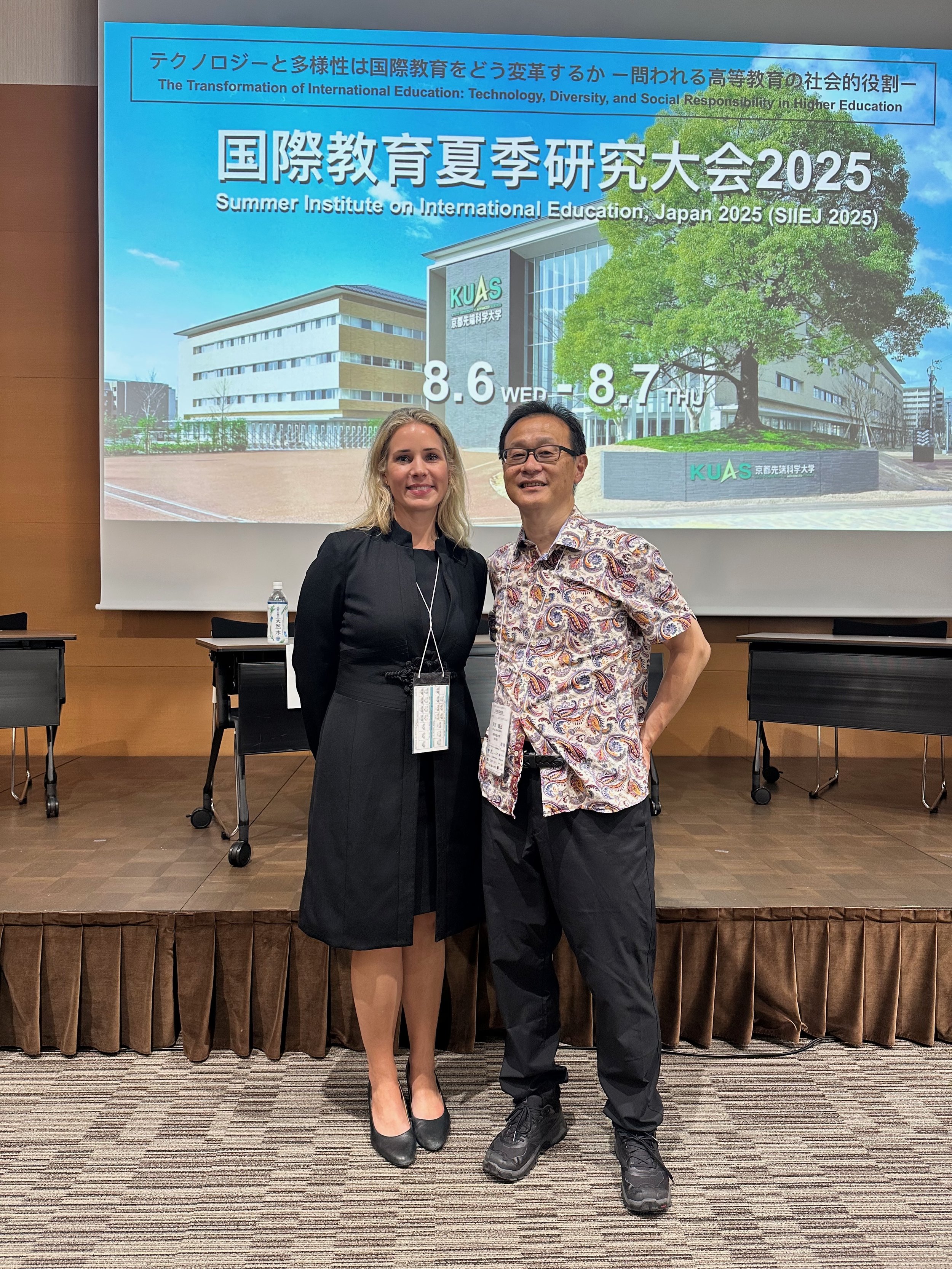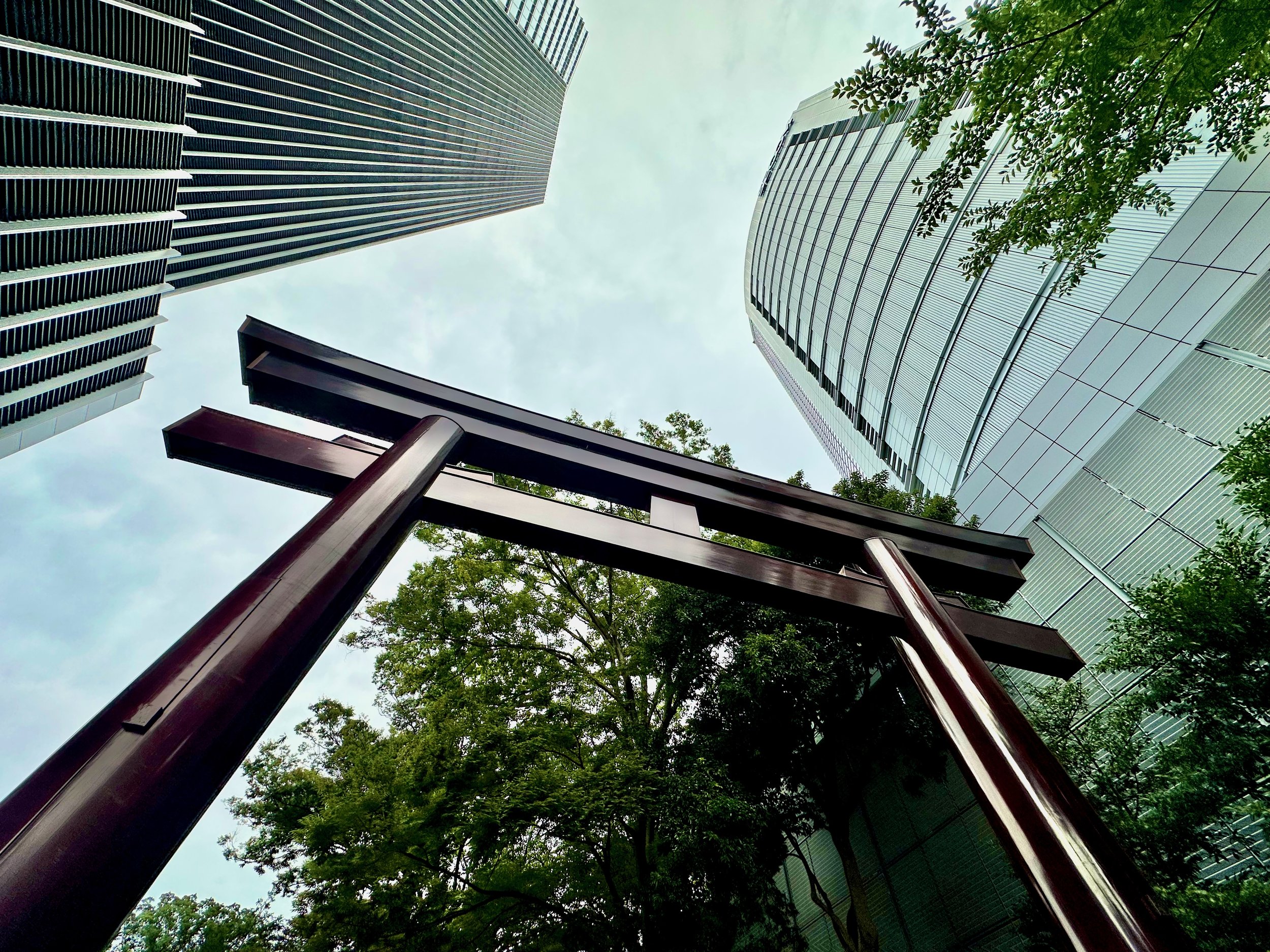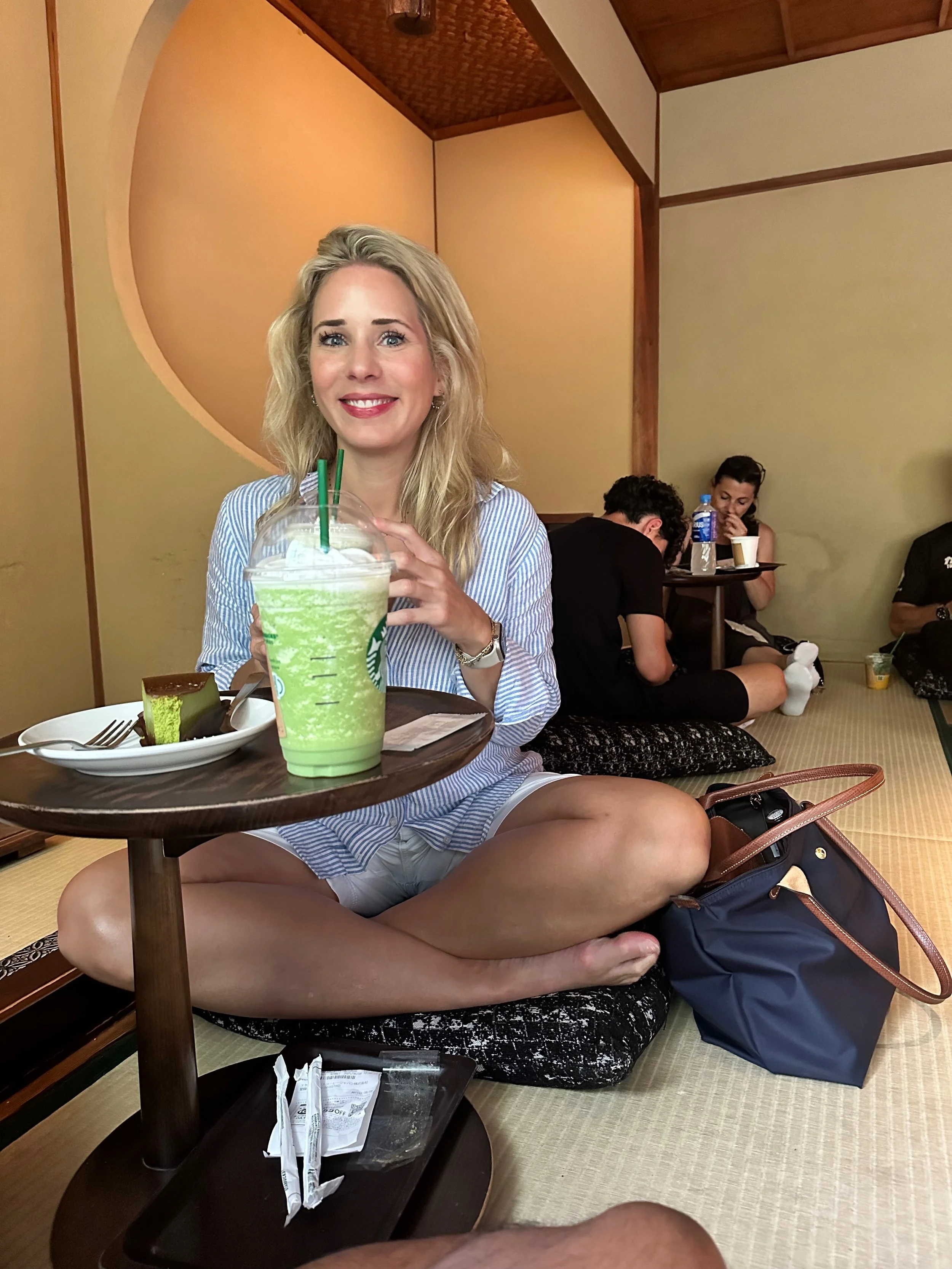Full Circle
The Shinkansen to Kyoto moves at 200 miles per hour, but somehow the journey felt like traveling through time itself. I pressed my face to the window, watching Mount Fuji emerge from the mist, knowing that I was both the same person who first saw this mountain in 2000 and someone entirely different. Ten days in Japan had unfolded like chapters in a story I was still writing, though I hadn’t realized I’d picked up the pen again.
Kyoto: Where Ideas Meet
The Summer Institute for International Education, Japan (SIIEJ) Conference in Kyoto brought me here initially, invited to present on AI in international education and to share what I've learned about bridging technology with human connection in our field.
The ancient capital, with its temples nestled between modern skyscrapers, felt like the perfect backdrop for conversations about innovation and tradition. The conversations were energizing, the kind that remind you why you chose this work in the first place, as conferences often do. During the keynotes and sessions, surrounded by colleagues from around the world, I found myself thinking about foundations. (I also think about Foundation a lot, and the three laws of robotics, but I digress.) Yes, the technological foundations we're building for the future but also the educational ones that brought us all here. I remembered the foundational experience of visiting Japan in 2000.
After Kyoto, two days were carved out in Hakone, a deliberate pause between the professional intensity of Kyoto and the frenetic capital of Tokyo, with all its walking and sight-seeing. The beautiful hotel overlooked the mountains, and from the outdoor onsen, steam rising around me, I felt at ease.
There's something about hot springs that strips away pretense. Sitting there, I found myself thinking about the twenty-year-old who first came to Japan with such hunger for experience, such certainty that the world was waiting to be discovered. I wondered what she would think of the person I'd become: whether she'd be proud of the path taken, surprised by the detours, curious about some choices. Some of the certainties that once defined her are now gone, she has risen a few times, broken her own heart more than once, yet she continues to be hopeful.
The mountains around Hakone held their silence, offering no answers, only the invitation to sit with the questions. And that was fitting, because the most important questions about who we become can only be answered by looking back at where we started - the same way understanding a foreign place requires first understanding the lens through which you see it.
Tokyo: The Weight of Time and Friendship
In 2000, a group of nineteen Croft Institute students who were enrolled in an East Asian Studies course at the University of Mississippi traveled to Japan, Taiwan, and Hong Kong for two weeks. I had recently switched my regional focus from European Studies to East Asian Studies, was in my fourth semester studying Chinese language, and I was so excited to be traveling to East Asia for the first time. What an extraordinary experience, made possible by a program that understood the transformative power of direct cultural immersion. So many distinct memories, from Clarence being mistaken for Tiger Woods over and over again, the ryokan having no roof in the shower area (and it was snowing), to Kathy getting lost in Roppongi (pre-cell phone days), and Ueno Park, Asakusa, Kyoto, and Nara. We were all overwhelmed by the scale and otherness of it all, most of us being from the South where cities do not look like Tokyo. Of course, nothing looks like Tokyo.
Tokyo still blazes with the same intensity, the crowds move with the same purposeful energy, but I move through it all differently. Now I navigate the city with the confidence of someone who has learned from earlier selves (though it seems that getting lost in Shinjuku Station is a rite of passage for every trip I take to Tokyo). I’m proud to be someone who has learned to find my way, though there are still detours. Finding my way, literally and figuratively, is a skill the Croft Institute cultivated in me years ago.
Following Google Maps, I met up with my college friend and fellow Croftie Chris Lamont for breakfast. We talked about his work, the path that led him to his life in Tokyo, the ways our Croft education had prepared us for careers we couldn't have imagined as undergraduates, AI in his work and my own, and how there are so many more important issues beyond whether a student is using ChatGPT to write a paper. I had just spent days at the conference discussing how AI might transform international education, but sitting in conversation, I was reminded that some forms of learning cannot be automated. The kinds of learning that happen when two people who've known each other across decades sit down and simply talk.
Chris and I were part of that inaugural Croft class, guinea pigs in an experiment in international education. Eighteen-year-olds entering a brand new program, we didn’t know anything beyond that we were required to study abroad (this is what sold me on Ole Miss and Croft), to study a language, and to write a thesis. All of us in that first class simply knew we wanted to understand the world beyond the South, beyond America, and beyond the comfortable boundaries of what we had always known.
Sitting across from Chris, I watched him talk about his work with the same passion he'd had as an undergraduate. He remains focused on transitional justice, an area that led him to Southern Europe as an undergrad and across the world as an expert in the field. I realized what a gift we had been given. The Croft Institute didn't just teach us languages and cultures and international relations theory, though it did all of that. It taught us that curiosity was a skill, that discomfort was often the price of growth, that the world was vast yet intimate in its coincidences.
Chris has built an extraordinary career here, one that matters in ways that extend far beyond any single institution or project. Seeing him thrive, seeing the impact of his work, I felt a deep gratitude for our friendship and for the program that brought us together and set us both on paths we're still walking.
How many of us from that first class ended up scattered across the globe, working in ways that cross borders and languages and cultures? More than should be statistically possible, I suspect. There's something to be said for programs that take young people seriously, that trust them with big questions and complex challenges, that insist that international education is a necessity. And those of us who may not have traveled extensively after college still carry the perspective-shifting experience of that first immersion: the understanding that there are many valid ways to live, work, and see the world.
Familiar Ground, New Eyes
The last morning in Tokyo, the quest for one last matcha latte commenced at Tokyo Station. While waiting for my flight, I thought about cycles: seasons, friendships, careers, the strange loops that bring us back to places we've been before but as different people.
Japan in 2025 feels both familiar and foreign, like returning to a childhood home after decades away. The rhythms are the same, but I hear them differently now. The food tastes as I remembered, but I understand the flavors in ways I couldn't at twenty. I'm comfortable with not understanding everything, a comfort that took decades to develop, yet I desire to understand more every time.
This trip was archaeology, digging through layers of memory and experience, discovering connections I hadn't realized were there. It was a reunion, with a place, with a friend, with an earlier version of myself. It was also a reminder that the best education does not just prepare you for a career, it prepares you for a life worth living.
Some journeys take you to new places. Others bring you to who you've always been becoming. This week in Japan was both, a reminder that some doors open, others close, and both can be gifts. It reminded me why this work matters, why creating these opportunities for students is worth a career. I'm grateful for every mile of the distance traveled: in space, in time, and in understanding.
The Croft Institute at the University of Mississippi
If you are curious about the Croft Institute for International Studies at the University of Mississippi, check out the website: https://croft.olemiss.edu/home/. If you are a high school counselor, fall 2026 applications for the Croft Institute close January 10, 2026.







